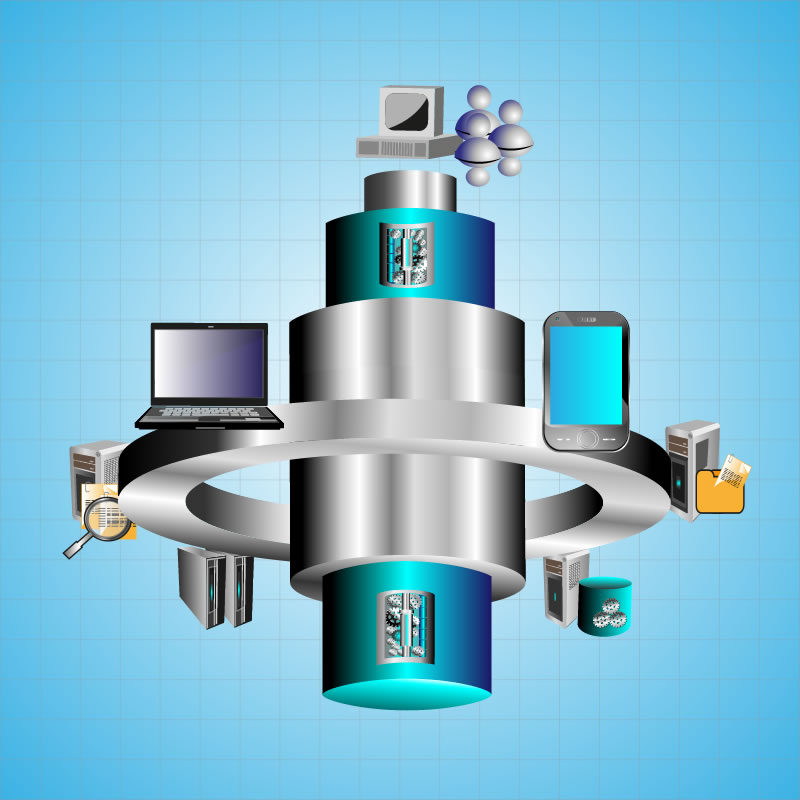The Raritan Blog
Home » Raritan Blog » KVM Switches vs. Software-Based Remote Access Tools
KVM Switches vs. Software-Based Remote Access Tools
Michael Bord
June 16, 2014

Many organizations rely on either enterprise KVM switches or software-based remote access tools to control multiple computer systems, often over geographically dispersed areas. While there may be some overlapping capabilities when it comes to mundane everyday activities such as server routine maintenance, both systems have inherent strengths and weaknesses that are important to assess before committing to one over the other.
First, it’s important to note that there are some real advantages to using software-based remote server management systems. As data center budgets have stagnated or declined over the last five years, managers have sought to cut expenses wherever possible. Many software-based remote access solutions like RDP and VNC are actually free to acquire. And, unlike a KVM switch, there’s no hardware to install or cables to connect. So, there’s no need to power a separate device or maintain records of it in your infrastructure management solution.
The strengths of software-based solutions tend to be the weaknesses of KVM switches. Prices for KVM switches can range from a few hundred for an SMB KVM switch to several thousand for an enterprise KVM-over-IP switch; a price that can increase dramatically if you need to access hundreds or even thousands of servers. Data center managers must also be sure to supply at least two power feeds per device and must purchase the correct computer interface modules (CIMs) to support their platforms and applications. So one can see how using KVM can be a bit of a hassle in some cases.
However, software-based remote access solutions have some serious downsides that should not be ignored:
- Software must be installed on every computer to be accessed and it will compete for system resources against critical applications.
- Requires a target computer OS and production network to run; which is virtually impossible in an emergency situation.
- There are some huge security risks that by some accounts are responsible for nearly 62% of breaches!
So the bottom line is that while software-based systems are commonly used, inexpensive, and easy to manage, they present vulnerabilities that end up being quite costly in the end; the loss of productivity due to the solution competing for resources with other application, the loss of services due to a lack of BIOS-level access for troubleshooting, and the danger and potential fallout of a security breach.
Now, consider some of the upside to KVM switches:
- No software agents are required on the client so there’s no loss of productivity due to competition between applications.
- Out-of-band, BIOS-level access for emergency situations, and virtual media (including remote booting).
- They do not use a production network and operate independently of the target computer’s OS, so there’s a smaller security risk, plus many adhere to strict protocols such as AES & FIPS 140-2 encryption, Common Access Card (CAC) authentication, and IPv6 networking.
Additionally, it should be noted that many enterprise KVM switches support upwards of 64 servers, and can be configured to work through a centralized server management solution, thus greatly negating the cost factor of KVM switches.
The choice of which remote access solution to use ultimately depends on several factors. The reality is that for smaller organizations with fewer servers, smaller budgets, less critical services, and non-sensitive data, software based solutions may actually be a better way to go. But, for companies with hundreds of servers that require a high performance solution that can be trusted to keep critical services running while ensuring information is safe, the decision to go with a software-based solution may end up being far costlier in the end.
See how other remote access solutions stack up against one another from this insightful eBook, or test drive an enterprise KVM-over-IP switch to see if it’s the right solution for you.
Other Blog Posts
- The Rapid Growth of AI and the Use of Raritan PDUs to Meet Higher Power Demands
- Posted on October 11, 2023
- Data Center Report Fewer Outages, But Downtime Still Costly
- Posted on September 20, 2023
- Survey: Energy Usage and Staffing Shortages Challenge Data Centers
- Posted on September 20, 2023
- Raritan Secure Switch: Secure NIAP 4.0 Compliant Desktop KVM
- Posted on September 20, 2023
- The Midwest is a Hot Market for Data Centers: How the New Generation of Intelligent Rack PDUs Can Save Cloud Giants Uptime and Money
- Posted on September 7, 2023
Subscribe
Upcoming Events
- AFCOM Data Center World
- April 15 – 18 • Walter E Washington Convention Center - Washington, DC
- Advancing Data Center Construction West 2024
- May 6 – 8 • Salt Lake City, UT
- Net Zero Data Center
- May 16 – 17 • Dallas, TX
- 7x24 Exchange Spring
- June 9th • JW Marriott Orlando Grande Lakes
Latest Raritan News
- Legrand Certifications and Process Controls Provide Confidence in Information Security for Network-Connected Devices in Data-Related Applications
- Posted on April 1, 2024
- Legrand Releases Version 4.0 of Raritan’s Industry-Leading Secure KVM Switches, Raising Bar for Secure Desktop Access
- Posted on July 31, 2023
- Legrand Revitalizes Data Center Sector with Two Revolutionary Intelligent Rack PDUs
- Posted on May 1, 2023
- Raritan Reveals The MasterConsole® Digital Dual KVM Switch
- Posted on February 18, 2021
- Legrand Data, Power and Control Division Announced as Finalist in Six Categories at DCS Awards 2020
- Posted on November 9, 2020